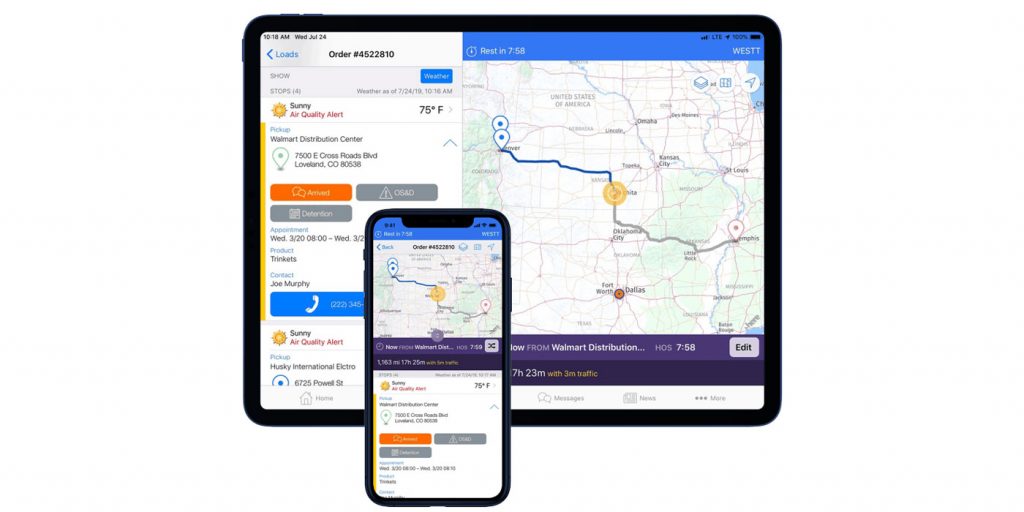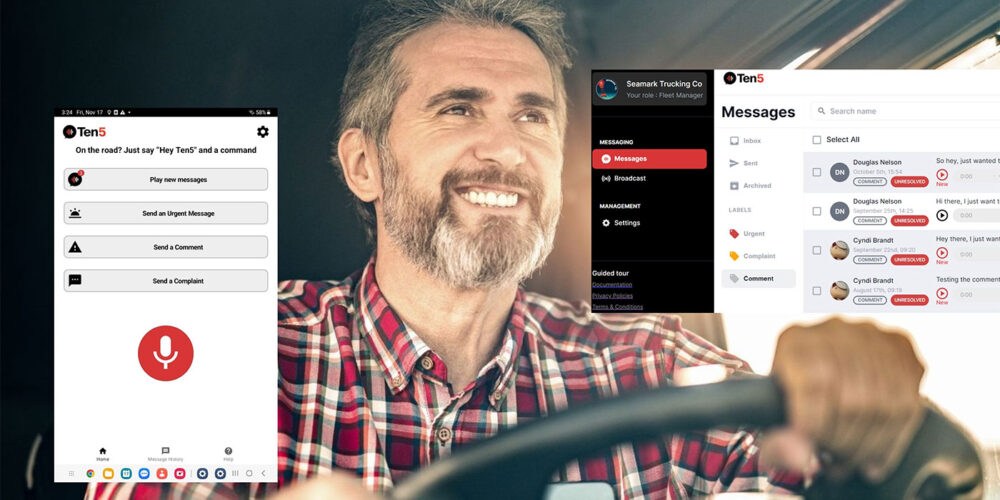Capable drivers are the lifeblood of a fleet, and the race to recruit and retain them is fierce. Among large-fleet trucking companies, the quality of the driver experience that can be delivered has emerged as a significant differentiator.
Operationally, fleets are constantly working to improve fleet efficiency in three areas: their fuel consumption and sourcing, truck movement throughout their network and their overall resource utilization. Truck navigation is highly complex, a logistical challenge pitting the interests of customers with tight supply chains, very specific ETAs for their deliveries and requirements for pick-up or delivery against strict government regulations mandating driver rest periods, all against the backdrop of uncontrollable and unforeseeable natural- and man-caused delays.
Everything boils down to control, for both drivers (employees and owner-operators) and trucking companies.
For example, while dispatchers have traditionally performed trip planning, they do it hours or a day in advance, but conditions change as trips are being run. The roads are a dynamic environment, and drivers work in a reality of accidents, weather and road conditions that a dispatcher couldn’t have anticipated.
“The driver needs access to tools that allow them to make decisions for themselves throughout an ever-evolving day,” says Kevin Survance, chief executive officer and co-founder of Eleos.
Driver empowerment, though, must be balanced against organizational control, he says.
“Ultimately, our customers regulate what their drivers do within the constraints and rules of the business—the profitability requirement for each load, for example. The company needs control over which screens, forms, fields, POIs and maps their drivers see,” Survance adds.
Survance says Eleos offers large-fleet trucking companies a platform on which to build tailored driver-facing applications that personalize each driver’s experience, based on their unique business rules governing communication, workflow and content flow.
An API-based business model
Partnerships, shared services and APIs make up the foundation of the Eleos Mobile Platform, Survance says.
“The world works better whenever there are specialists who are extremely good at solving particular types of problems and they’re able to offer to the rest of the world very clearly defined ways of accessing those specialized capabilities,” he says. “In software, it’s a very powerful concept.”
Survance classifies Eleos as an enabler; his company does not do business logic. Decisions regarding what drivers see and do and what information they’re given lie with his customers.
“We specialize in driver communication, workflow, content delivery. We create these powerful capabilities—geo-fencing, trip planning, etc.—and then we create APIs of our own to make it easy for our customers to access the skill and the expertise we have,” he says. “Building with APIs is a very crucial part of how we operate; they’re intrinsic to our worldview when it comes to technology. We solve very complex problems related to orchestrated driver communication, and we create APIs to make that simple and easy for our customers to get control of it and to integrate it into their overall operating platforms and their trucking fleets.”
Adding situational awareness with APIs
Eleos partnered with Here Technologies due to Here’s capabilities around mapping, routing, geocoding and navigation, Survance says. Eleos integrates Here SDKs and APIs, including truck routing, navigation and real-time traffic, into the native iOS and Android applications it provides its customers. The most critical of these concern navigation—legal and safe navigation for heavy trucks is the industry’s core requirement.
“That’s a bottom-line issue for us, certainly, but we needed more. We needed an open platform to build our own version of the driver experience as they’re planning their trips and actually driving down the road. That was probably the most important aspect of Here Technologies’ offerings I considered when I made the decision to partner with them,” Survance says.
By using Here’s location technology, Survance says Eleos helps its customers build applications that fully leverage and adjust to each driver’s situational awareness on the road (traffic, weather, etc.).
“Here has given us an open platform that allows us to constantly build functionality, perhaps something that develops a route based on the geometry of the roads, because a legal route isn’t necessarily a route you would want to drive your 18-wheeler on,” he says.
Eleos tailors each driver’s experience to such variables as his/her level of experience, the type of freight being hauled, the type of vehicle driven, weight, length, etc., Survance says. For instance, instructions with a higher level of detail may need to be sent through the mobile application to a person new to driving a heavy truck; whereas, those instructions are just unnecessary noise to those with higher-level experience.
“Before we introduced our mobile platform, drivers had to sit in their trucks in order to communicate with the home office,” Survance says. “They would literally be out in a parking lot outside a place with a comfortable restaurant, for example, sitting in their truck for fear of missing the next dispatch order, because if they miss it, that load may well be given to somebody else.
“We’re taking mapping, routing, geocoding and POI-type services, and we’re creating these very unique, highly crafted experiences for specific audiences. We’re weaving those experiences into a map—the map is the application. We couldn’t have done that in years past. That’s truly exciting.”
This story is part of a larger series, How data can influence your best drivers to stick around.













